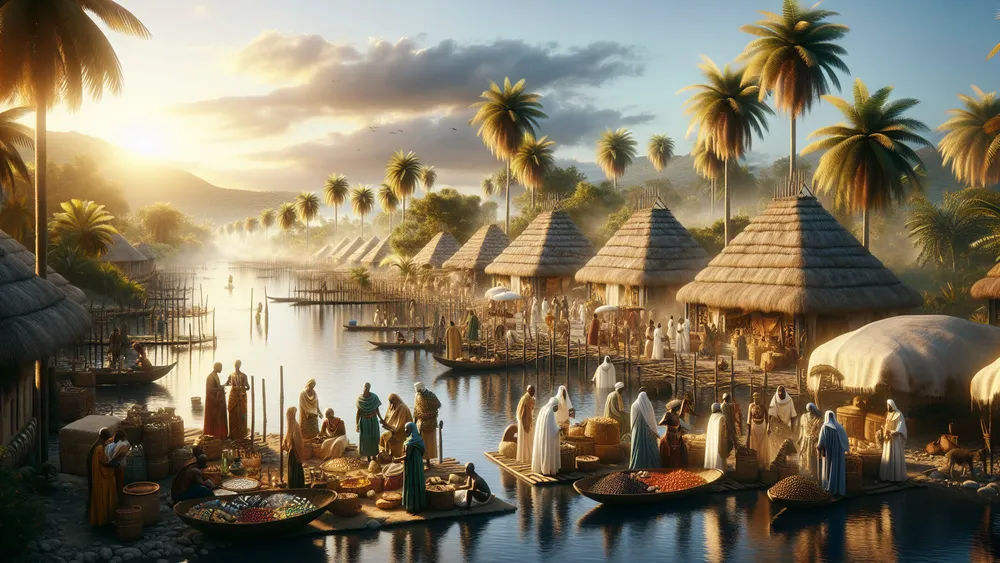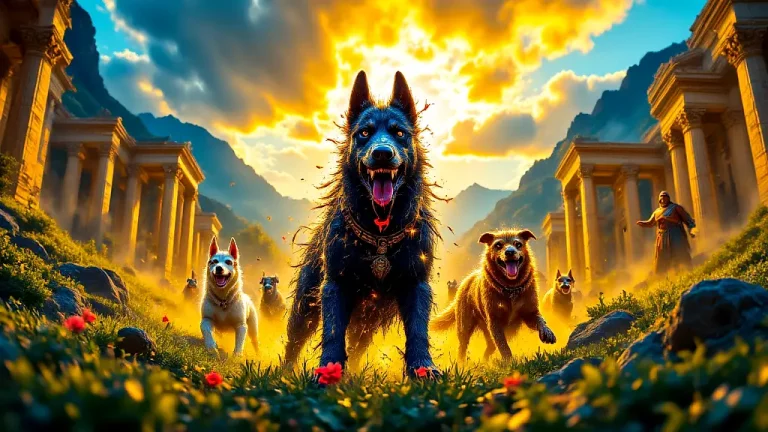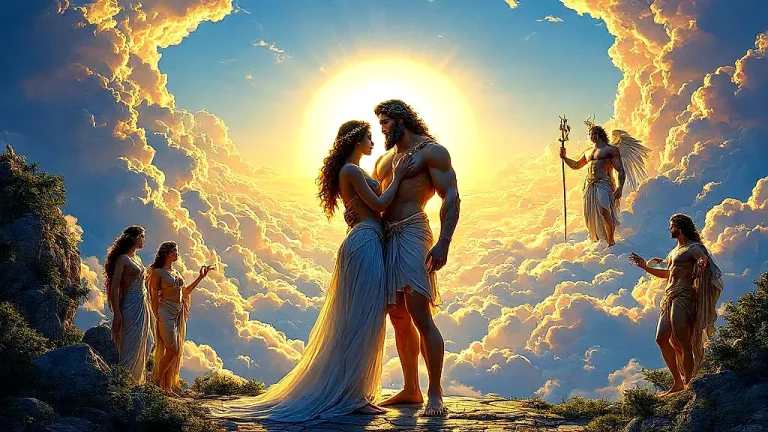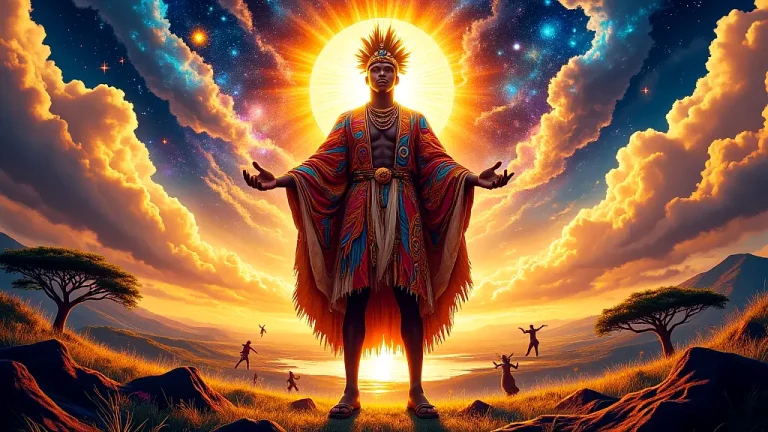Land Of Punt: Ancient African Kingdom’s Rich Trade Economies
Envision a busy market where traders from far places assemble and swap unique things, valuables, and unusual creatures. This captures the gist of the Land of Punt, an old African kingdom that took a big part in the trade lives of old Egypt. When diving into this blog post, mysteries of Punt will be found, starting from its first mentions in Egyptian writings to the famed trip led by Queen Hatshepsut.
Key Points:
- Land of Punt was a major trade partner of ancient Egypt.
- It was first mentioned in Egyptian writings around the 25th century BCE.
- Possible locations for the Land of Punt include Somalia, Eritrea, and Sudan.
- Queen Hatshepsut led a famous expedition to Punt around 1493 BCE.
- Trade items between Egypt and Punt included gold, incense, ebony, ivory, and exotic animals.
- The cultural and religious ties between Egypt and Punt were strong.
- Modern archaeological finds and scientific studies have provided new information about the Land of Punt.
Also, different thoughts about its geographic location will be looked into, the rich trade items swapped, and the cultural and holy ties linking Punt to Egypt. Yet, modern archaeological finds and scientific checks have brought new light on this wondrous land, giving new thoughts into its past and significance.
Therefore, let’s start this trip to know the Land of Punt and its rich trade worlds.
Land Of Punt: Overview and Key Facts
| Key Point | Description |
|---|---|
| Name | Sometimes called Pwenet or Pwene, the Land of Punt |
| Historical Importance | Big trade partner of ancient Egypt, famous for its riches in goods |
| First Mentions | Seen in old Egyptian writings from the 5th Dynasty (around 25th century BCE) |
| Geographic Ideas | Many possible spots like today’s Somalia, Eritrea, and Sudan |
| Notable Trips | Queen Hatshepsut led a trip around 1493 BCE |
| Trade Items | Gold, incense, ebony, ivory, unusual animals, and nice-smelling resins |
| Cultural Links | Strong holy and cultural bonds with old Egypt |
| Recent Finds | New archaeological finds and scientific checks giving new thoughts |
| Shown in Art | Often seen in Egyptian temple carvings and writings |
| Economic Role | Major part in the wealth and growth of ancient Egypt |
The Importance of the Land of Punt
For a real understanding of what the Land of Punt meant, it’s key to look into its early mentions, location mysteries, and the well-known trip by Queen Hatshepsut.
Where It All Began and Early Mentions
The Land of Punt shows up in old Egyptian writings from the 5th Dynasty, which is around the 25th century BCE. These early talks about Punt show a land full of resources, often called a “land of gods” because of its many valuable goods. Imagine those old Egyptian scribes carefully writing down trade deals, a bit like today’s shipping logs, noting down gold, incense, ebony, and unusual animals.
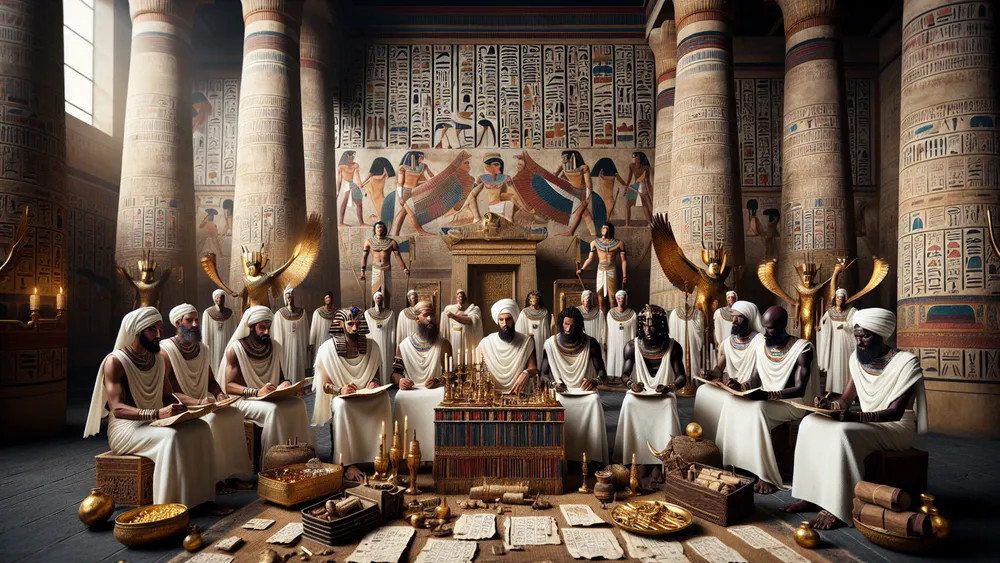
These writings tell us not just about Punt’s economic importance, but also its respected place in Egyptian life.
Also, in old Egyptian stories and beliefs, Punt had a big place. It was often shown as a holy land, tied to the gods and afterlife. The Egyptians thought Punt was where holy myrrh trees came from, which were very important for religious acts and temple gifts. This spiritual link is clear in many temple pictures and writings. Important old texts and items that mention Punt include:
- The Palermo Stone: A very old Egyptian stone made of black basalt that notes down the early dynasties.
- The Pyramid Texts: Holy writings from the Old Kingdom that talk about Punt as a holy land.
- The Deir el-Bahari Reliefs: Temple pictures from Queen Hatshepsut’s resting place temple showing the trip to Punt.
- The Papyrus Harris I: A big papyrus paper from the New Kingdom that talks about the wealth and resources of Punt.
These writings and items give us a look at how the old Egyptians saw Punt, not just as a trade friend but as a land rich in cultural and religious meaning.
Ancient Egyptian writings and artifacts reveal Punt as a land of divine significance, abundant in valuable resources and spiritual connections, influencing both trade and religious practices.
Where Was It? Different Ideas
For a long time, people have argued over where the Land of Punt actually was. There are different ideas, each backed by different proof. Some say it was where Somalia is now, pointing to that place’s old trade in incense and myrrh, which the old Egyptians loved.
But others think it was in Eritrea or eastern Sudan, looking at the plants and animals in Egyptian writings and comparing them with those places. Imagine looking for a fabled city from old maps and writings – it’s like a present-day treasure hunt, with each clue leading to another possibility.
Proof for these ideas comes from several things: archaeological finds, old records, and geographical studies. For example, writings and pictures from Queen Hatshepsut’s temple at Deir el-Bahari show the plants, animals, and people of Punt, giving us hints about its surroundings. Also, ancient texts like the “Periplus of the Erythraean Sea,” a Greek-Roman piece, talk about trade routes and trade items that match the suggested spots. Here’s a table to compare these places and the proof for each:
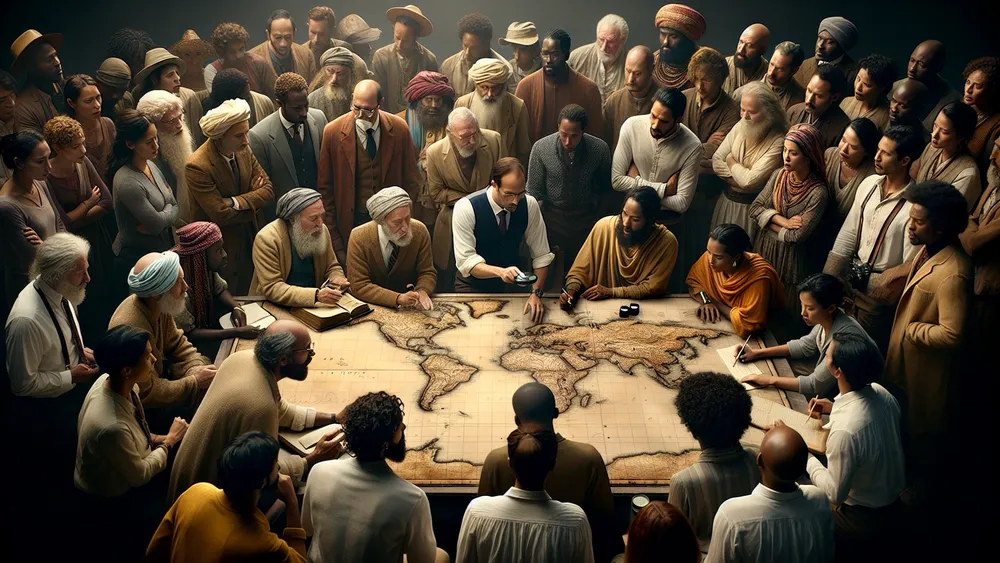
| Proposed Location | Supporting Evidence |
|---|---|
| Somalia | Old trade in incense and myrrh, geographical details in Egyptian writings |
| Eritrea | Similar plants and animals, archaeological finds |
| Eastern Sudan | Environmental similarity, old records |
| Southern Arabia | Trade routes in ancient texts, archaeological trade items |
These ideas and their proof give us a look into the never-ending search to find the Land of Punt, a search that keeps drawing in historians and archaeologists.
The Hatshepsut Journey to Punt
A well-known trip to the Land of Punt was led by Queen Hatshepsut, which gave great insights into this strange place.
The Trip and Its Records
The trip to Punt, which was led by Queen Hatshepsut around 1479-1458 BCE, is among the best-recorded and most famous journeys in old Egyptian history. This big trip was made to make and improve trade relations with Punt, a land well-known for its wealth in useful things.
Imagine how the Egyptian sailors felt, setting out on this grand trip, sort of like today’s scientists going on an important research mission. From the port of Quseir on the Red Sea, the fleet of ships started the journey southward along the shore, sailing through risky waters and dealing with the difficulties of long sea travel.
Written on the walls of Hatshepsut’s mortuary temple at Deir el-Bahari are the records of this trip. They give a clear story about the journey and its results. These writings tell us the way they took, the meetings with the people of Punt, and the goods traded. The trip was tough, like going through unknown places and making sure the important stuff was safely carried. Main events and things found on the trip include:
- The leaving from the port of Quseir.
- The reaching of Punt and the friendly greeting by the Puntite king and queen.
- The trading of gifts like gold, incense, ebony, and strange animals.
- The detailed descriptions of the plants and animals of Punt.
- The safe coming back to Egypt with the things they got.
These writings show both the planning and the friendly efforts of the trip, and they also give important knowledge about the rich cultural and trade exchanges between Egypt and Punt.
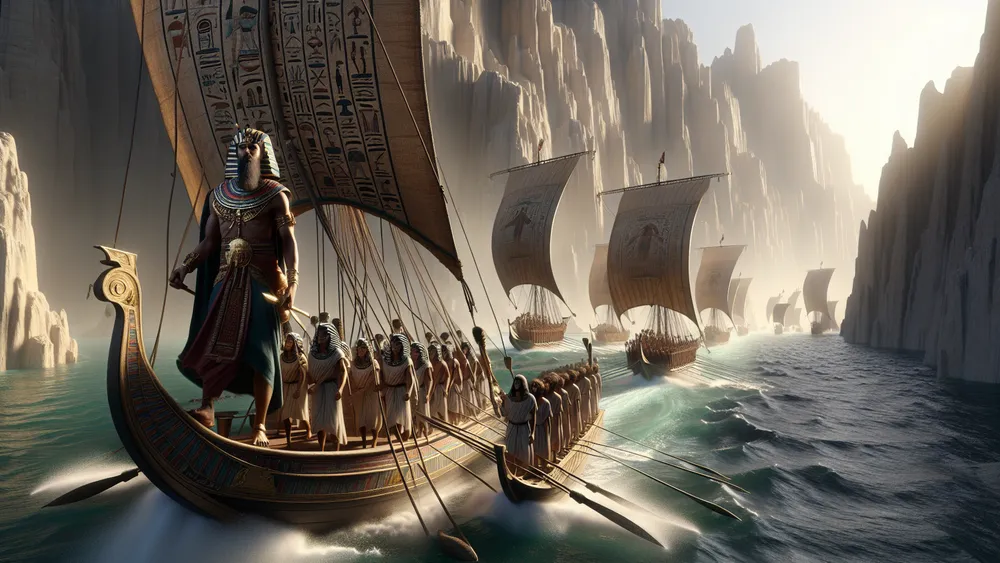
What They Traded and Why It Mattered
The trade between Egypt and Punt included swapping lots of important items, things that were loved and wanted in both places. From Punt, the Egyptians got gold, incense, ebony, ivory, and special animals like baboons and giraffes. Such goods wanted not only for their worth but also had big cultural and religious meanings. For example, incense was necessary for religious tasks and offerings at temples, while gold was made into jewelry and things.
Think of busy ancient Egyptian markets filled with incense smells and gold shine, sort of like today’s big international trade shows with rare stuff.
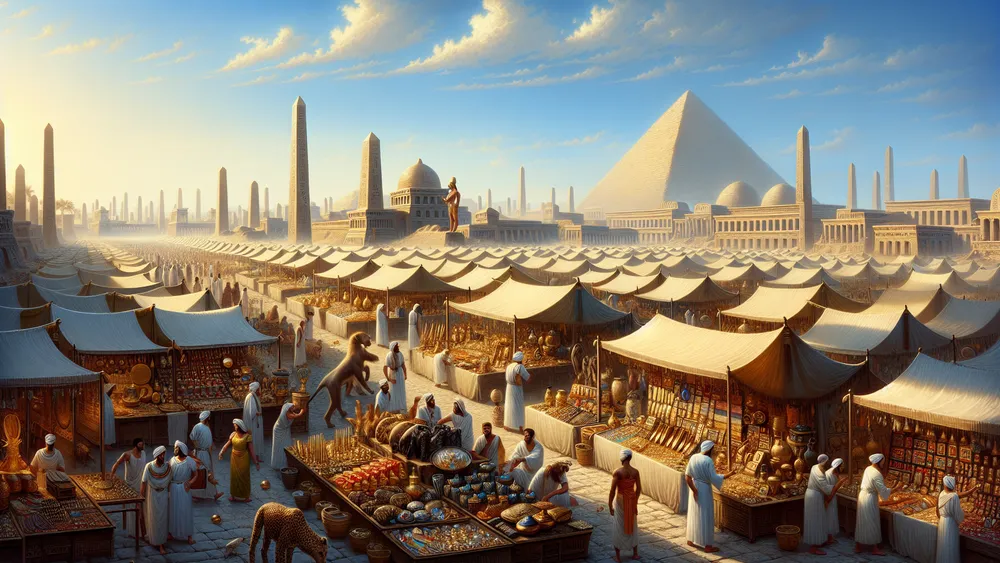
For both Egypt and Punt, this trade was a big deal. Egypt grew richer and more prosperous, and it was good for their cultural and religious sides, too. Trade helped in building up diplomacy and stronger political ties. Meanwhile, in Punt. Egyptian-made goods such as tools, weapons, and jewelry, came. These items were treasured there and helped their economy. This trade was good for both, as it kept them both doing well and growing. Here are some of the most important trade items and their meanings:
- Gold: Made into jewelry and things, showing wealth and divine power.
- Incense: Needed for religious tasks and temple offerings.
- Ebony: Furniture and decorations.
- Ivory: Used to make fancy things and carvings.
- Exotic Animals: Baboons and giraffes, kept as pets and in religious events.
These trade items not only helped each economy but also were important in the cultural and religious worlds of both Egypt and Punt, showing the strong ties between these old civilizations.
Cultural and Religious Ties
More than just trading goods, the bond between Egypt and Punt held deep cultural and religious meaning.
The Spiritual Importance of Punt in Ancient Egypt
Punt had a special spot in Egypt’s religious world, often called “God’s Land” in different texts. This name shows its imagined holy nature and divine favor. Egyptians thought Punt gave sacred stuff like incense and myrrh, needed for religious ceremonies and temple offerings. Think of Punt as a holy pilgrimage place, where just getting there meant something spiritual.
The link to Punt was not just about trade, but also deep in spirit, as it was seen as a land blessed by the gods, giving divine supplies. In religious writings and temple carvings, Punt appeared as a green, rich place with lots of plants and strange animals. These were not only art but had deep symbolic meanings.
For example, in the carvings at Hatshepsut’s mortuary temple at Deir el-Bahari, the Punt trip is shown, highlighting divine support for the trip. In Egyptian stories, Punt was tied to certain gods, like Hathor, the goddess of fertility and motherhood, and Amon, the king of gods. These ties made Punt’s status as a holy and mystical place even higher.
The spiritual link to Punt made the Egyptians believe they were not just trading far away but doing a holy trade blessed by the gods themselves.
Punt was viewed as a sacred land by Egyptians, providing divine resources essential for religious rituals and symbolizing a spiritual connection blessed by the gods.
Art and Images Showing Punt
In old Egyptian pictures, how they saw Punt is shown in some really interesting ways. The best known are in the carvings at Hatshepsut’s mortuary temple at Deir el-Bahari, about their trip to Punt. The pictures, showing green places with lots of plants, unusual animals, and the homes of the people in Punt. Think of these carvings like old travel videos, showing a faraway place and what makes it special.
Lots of detail in these pictures shows Punt was important to the Egyptians’ thoughts, and they saw it as rich and full of life. The pictures used to show the people, animals, and landscapes of Punt have lots of meaning. The people from Punt look different and wear different clothes, making them stand out from the Egyptians.
Animals like baboons, giraffes, and leopards are seen a lot, meaning the many natural resources of Punt. The areas are shown as green and full of life, making Punt seem like a place with lots to offer. These pictures weren’t just for decoration, they were meant to tell the Egyptian people Punt mattered both culturally and economically.
They made the story of Punt as a rich land blessed by the gods, very important to Egypt’s spiritual and physical wealth.
Modern Findings and Research
Leaving old pictures, we now see current findings and studies, bringing new understanding to the mysterious Land of Punt.
Recent Digs and What They Mean
New digs have given new info on the hard-to-find Land of Punt, giving interesting hints about its past and place. Digging in places like eastern Sudan and Eritrea, found old things showing links to Egypt’s old trade paths. For example, broken pottery and writing found there look a lot like ones used in Egypt, showing a possible link to Punt.
These finds are like puzzle pieces revealing more about Punt’s role in old trade. These findings have made experts talk more and helped us get closer to finding Punt’s exact place, long guessed by many.
What these finds mean is big, as they help clear the past and culture of Punt. By looking at the old items and where they came from, researchers know more about how Egypt and Punt traded. This has led to finding important dig spots key to understanding Punt:
- Mersa/Wadi Gawasis (Egypt): A Red Sea port used to start trips to Punt, showing old ship parts and trade items.
- Berenike (Egypt): Another key port on the Red Sea, where things related to Punt were found, like incense holders and pottery.
- Adulis (Eritrea): An old port city that might be part of Punt’s trade, with finds showing lots of sea trade.
These places give good info on how Egypt and Punt traded, showing the economic and cultural swaps they had. Ongoing work at these sites keeps adding to our understanding of this hard-to-find land, making it clearer what Punt was all about.
New Tech and Scientific Studies
Modern tech changed studying the Land of Punt, giving tools that old explorers never had. For example, DNA tests let researchers find where stuff in old Egyptian graves, like resins and animal remains, came from and show where Punt might be. This is like using genetic clues to solve an old puzzle, giving solid proof of trade links.
Satellites also help a lot, letting archaeologists find interesting places from above. These sharp images show old trade paths and settlements hiding under the sand, like a treasure map showing hidden stuff. Specific science studies have given big hints about Punt’s past and trade links.
For example, a study checking what incense was made of found in Egyptian temples showed resins likely came from the Horn of Africa, which backs up ideas that Punt was there. Another study used satellites to map old trade routes by the Red Sea, finding ports and stops that trade trips to Punt used. These studies add new pieces to our picture of Punt.
Using old digging methods with new tech, researchers are finding out secrets of this old land, bringing us closer to solving one of history’s long-standing puzzles.
FAQs
1. What was the Land of Punt known for?
The Land of Punt was known for its rich trade in goods such as gold, incense, and exotic animals.
2. Where is the Land of Punt believed to be located?
The Land of Punt is believed to be located in the region encompassing modern-day Somalia, Eritrea, and parts of the Arabian Peninsula.
3. Why was the Hatshepsut expedition to Punt important?
The Hatshepsut expedition to Punt was important because it established significant trade relations and demonstrated Egypt’s naval capabilities.
4. How have modern discoveries changed our understanding of Punt?
Modern discoveries have changed our understanding of Punt by providing new archaeological and scientific evidence that clarifies its historical significance and potential location.

